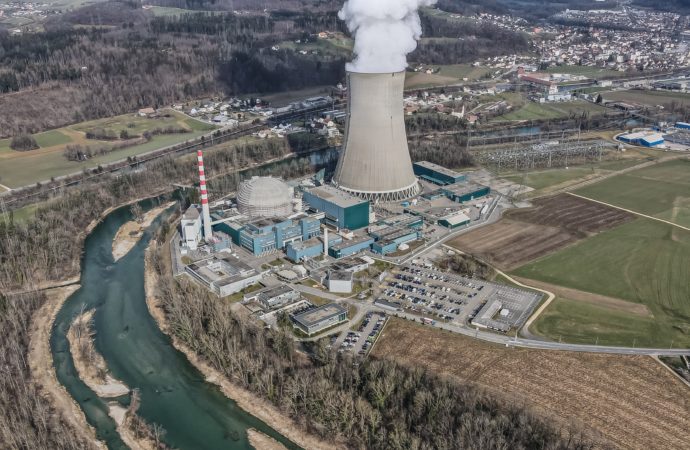Though it may not seem like it at first glance, the state of California and the country of Germany share some uncanny characteristics, particularly when it comes to energy policy.
Both fancy themselves pioneers in the green energy transition, and both punch above their weight with their respective abilities to influence surrounding governments to adopt their green initiatives.
Unfortunately for their residents, both have also taken a hostile position towards their respective fleets of operating nuclear plants, largely at the behest of environmental activists. And now, not unrelatedly, both find themselves dealing with self-imposed energy crises.
However, it would seem that even the most recalcitrant anti-nuclear policymakers can see the light given sufficient motivation.
Per the Washington Examiner:
NEWSOM BACKS DIABLO REPRIEVE, CITING POWER GRID THREATS: California Gov. Gavin Newsom issued last-minute draft legislation to extend the life of the Diablo Canyon nuclear power plant through 2035, a once-unthinkable step opposed by environmentalists, in an effort to protect a grid threatened by extreme heat.
Late last week, Newsom requested lawmakers extend Diablo Canyon’s operations for another decade beyond its long-planned shutdown date of 2025. He also requested they approve a $1.4 billion loan to the plant’s owner, Pacific Gas & Electric Co. (PG&E) to extend operations of the facility.
Diablo Canyon is currently the last operating nuclear plant in the Golden State, thanks to years of vehement opposition to nuclear from the California’s green activists.
On its own, the 2100 MW Diablo Canyon plant supplies nearly 9 percent of the state’s total electricity and roughly 17 percent of its carbon-free electricity. Despite representing such a massive source of clean electricity, state regulators slated the plant for closure by 2025 in a move that was cheered by Governor Newsom and his environmental allies.
But when the state is facing an estimated 1,700-5,000 MW capacity shortfall in electricity due to its aggressive moves to transition away from fossil fuels, the Governor can no longer afford to be cavalier about nuclear power’s role in electricity reliability.
As for Germany, its about-face on nuclear has been even more stark.
From the Wall Street Journal:
Germany plans to postpone the closure of the country’s last three nuclear power plants as it braces for a possible shortage of energy this winter after Russia throttled gas supplies to the country, said German government officials.
While temporary, the move would mark the first departure from a policy initiated in the early 2000s to phase out nuclear energy in Germany and which had over time become enshrined in political consensus.
It’s hard to overstate what a big shift this move represents. The misguided anti-nuclear sentiment among German politicians runs deep, as the Journal points out:
It is also politically sensitive. The nuclear phaseout was initiated by the Social Democrats and Greens, the leading parties in the current coalition, and has become part of the parties’ identities, particularly for the Greens, a party that was born out of the antinuclear movement.
German opposition to nuclear is deeply tied to its Energiewende—or, “energy transition”—a policy dedicated toward moving to a zero-carbon economy while curiously also phasing out its existing nuclear plants. At the time the Energiewende was initiated, nuclear power was the largest single source of electricity generation in the country. It now represents one the country’s smallest generating sources.
Following the 2011 Fukishima accident, then-Prime Minister Angela Merkel rapidly accelerated the country’s nuclear phaseout, charting the course that led to the total phase-out of nuclear power this year.
Major geopolitical events have a way of changing one’s perspective, however. The Russian invasion of Ukraine has exposed the folly of Germany’s reliance on a hostile foreign government for the bulk of its natural gas—the fuel it used to take the place of its nuclear fleet—and has even led to the country reopening its mothballed coal plants just to keep its population served with power.
Though it appears to only be a temporary step for now, it is nevertheless a positive sign that some Greens are starting to rethink their anti-nuclear posture. After all, it serves only to counteract their goals. In almost every single instance where a nuclear plant was prematurely phased out at the behest of environmental activists, fossil fuels have replaced the shortfall in capacity.
The 2013 closure of California’s San Onofre plant, for example, led to a 37 Million Metric Ton increase in CO2 emissions in the state in the four years immediately following its closure. That’s because fossil fuels were the only reliable substitute for it’s baseload power.
The experience has been much of the same in New York, Florida, Wisconsin, and Vermont where capacity shortfalls from nuclear plant closures over the last decade were replaced almost entirely with either gas or coal. That’s because for all the talk about wind and solar being ready for prime time, energy providers realize that if you want a reliable energy mix, you’re options are either fossil fuels or nuclear (and hydro where geographically feasible).
It’s a big win for rational policymaking to see both California and Germany rethink their misbegotten hostility toward such a fount of abundant, reliable, clean energy like nuclear.








